News
2023.08.21
Columns
Hasami Ware: Porcelain Popular as Daily Tableware
Hasami ware (Hasami-yaki) is porcelain produced in Hasami-cho located in the central part of Nagasaki prefecture. Hasami-cho is adjacent to Arita-cho, Saga Prefecture, which is famous for Arita ware, and has some similarities in history.
In this column, we will introduce the history and characteristics of Hasami ware.
Table of Contents
1. History
_1.1 The Beginning of Hasami Ware
_1.2 Shift Change from Pottery to Porcelain
_1.3 Response to Increased Production Volume
2. Charasteristics: Similarities and Differences with Arita Ware
3. Representative Products
4. Conclusion
History
The Beginning of Hasami Ware
Today, Hasami-cho is famous for its porcelain production, but in the olden days, from the late 1500s to the early 1600s, it was a pottery production area. At that time, Karatsu ware spread mainly in parts of present-day Saga and Nagasaki prefectures, and as a result, pottery began to be produced in Hasami as well.
Porcelain production began in earnest around the 1630s. As with the history of Arita ware, the birth of Hasami ware is related to the dispatch of troops to Korea by Toyotomi Hideyoshi. Yoshiaki Omura, the feudal lord of the Hasami region, brought the Korean potter Lee Yu-kei back to Hasami when he withdrew from Korea. After that, Yu-kei built multi-chambered stepped climbing kilns at three locations in Hasami-cho and began producing porcelain. This became the foundation of Hasami ware.
Shift Change from Pottery to Porcelain
Around the 1630s, the adjacent Arita area abolished the pottery kilns and began to focus on porcelain production. And in Hasami-cho, the pottery stone suitable for making porcelain was found in the Mitsumata area. As a result, in Hasami as same as in Arita, the production shifted from pottery to porcelain and their main productions were sometsuke and seiji.
In addition, this Mitsumata Whetstone Pottery Stone Quarry is now a national historic site, and for about 350 years from the early Edo period to the 40s of the Showa era, pottery stone quarrying was continued for the production of porcelain. Modern Hasami ware is mainly made from Amakusa pottery stone from Kumamoto Prefecture, which is also used for Arita ware.
How They Handled the Increase of Production Volume
From around 1650, exports increased and the number of kilns also increased. As the production volume increased, the Omura Domain established the Sarayama government office, and the domain itself began to manage the production of pottery.
From around 1690, the production of pottery for the domestic market was focused rather than for the foreign market. Reasonable and easy-to-use tableware for daily use gained popularity all over Japan, and boasted the highest production volume in Japan. From the fact that Hasami ware has been unearthed from Edo period ruins all over Japan, we know that it was shipped from Imari Port to all over Japan. What made it possible to product this volume of production is due to the achievement of a huge climbing kiln with a total length of more than 100meters, which is unprecedented in the world.
In the Meiji period, the Sarayama government office was abolished, and the scale of the huge climbing kiln was forced to shrink. As a result, Hasami ware faced an existential crisis. However, thanks to efforts to revive the industry as a whole, including the establishment of a training school and the formation of an industry group, it has regained its vitality. And the production of tableware for daily use continues to this day.
Characteristics: Similarities and Differences with Arita Ware
Hasami ware is sometimes compared with Arita ware. Each has similarities, but has different characteristics.
◎Common points
・High-quality Amakusa pottery stone is used as raw material.
・Clear white porcelain.
・The foundation was laid by Korean potters.
◎ Differences
・Arita porcelain: Luxury and gorgeous.
・Hasami ware: Daily use, simple design.
Representative Products
Representative products of Hasami ware include the following.
Kurawanka Bowl
A tableware for everyday use, with karakusa pattern simply drawn with a brush on a slightly rough clay-like base. The porcelain bowls were sold at an affordable price that even ordinary people could afford, and the conventional wisdom that porcelain bowls were considered to be high-end items was greatly changed. It is said that the origin of the name comes from merchants in the Edo period who sold them by saying, “Mochi kurawanka, sake kurawanka.” (“Would you like some rice cake? Would you want some sake?”)
Kompura bottle
Kompura bottle is a bottle-shaped porcelain used for exporting sake and soy sauce. The unique shape was an order from the Dutch. It is said that Louis XIV of France and Tolstoy of Russia liked and used it habitually. Also, it is said that this name was given because it was exported by “Kompura Trading Company”.
Warenicka
Developed in 1987 as tableware for school lunches, it is the root of reinforced porcelain. It is said that the name comes from the sound of dialect, meaning of “hard to break”. It is now used in schools and hospitals across the country.
Conclusion
Hasami ware has gained popularity among common people throughout Japan as tableware for everyday use. Because Hasami is close to Arita, the production area of Arita porcelain, their history is similar and they use same pottery stone. However, compare to Arita ware which is luxury and gorgeous, Hasami has simple designs for dairy use. This is the reason that Hasami ware was widespread among the common people and it has become a presence that changes the high-class image of porcelain.
From the Edo period to the present day, Hasami ware has been a familiar part of the lives of ordinary people and will continue to be a part of our lives.
Imoto Sangyo handles a wide variety of Japanese ceramics and pottery. For more information, please see the “Goods & Cases” page.
(Reference)
Hasami Ceramic Industry Cooperative
Hasami Town Tourism Website
Category
Archive

